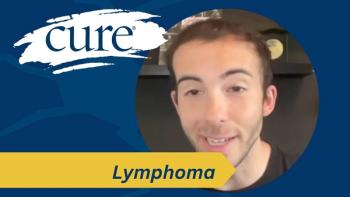
A New Approach to Chemo Support
When my daughter was going through cancer, I realized that connecting with one her peers going through a similar experience was incredibly helpful.
My 27-year-old daughter was diagnosed with breast cancer in 2019, and I have been writing about my caregiving experience and following cancer-related websites and social media feeds ever since. Although some of the players are the same, many new patients over that time have heard those same three words I heard that changed my life forever and have joined the cavalcade of passengers on the Cancer Express.
I have noticed lately that the same questions regarding cancer treatment that we had back then seem to come up over and over again and that got me to thinking…might there be a better way for new patients with cancer to get some answers to their questions other than Twitter or diving down the internet rabbit hole?
Research has demonstrated a number of ways that peer support, in addition to regular treatment and therapy, can uniquely support people in distress. By supplying empathy, connection and hope through sharing common personal experiences, peer support offers a deeper sense of understanding and empathy between peers who may otherwise feel misunderstood.
When my daughter was at the end of chemotherapy and going to the same oncology clinic for Herceptin infusions, the nursing staff asked if she would be open to speaking to another young woman who, like Adrienne had been, was years younger than else in the room. When she sat down the girl was weeping but as they engaged in conversation her emotions seemed to settle and by the end there were a few smiles sprinkled in. They agreed to try to schedule Adrienne’s once-every-three-weeks infusion at the same time as the other girl’s chemo so they could visit and catch up, and they are still friends four years later.
Cancer can be a very isolating experience, and for a young person sitting in a chemo chair looking around and seeing no one that looks like them that goes even deeper. That isolation is often continued at home due to the necessity of protecting oneself from being exposed to anything that might cause an infection that due to chemo the body would not be able to fight. For a great number of the 20 weeks that Adrienne was undergoing treatment, the only time we went anywhere was to the oncology clinic — and it became a much-appreciated social outing.
The emotional toll of a cancer diagnosis is huge. The suggestion is always there to join a support group, but that means venturing out of the safety of home, potentially when the side effects have you afraid to drive because of chemo fog or you don’t want to be more than four feet away from a bathroom, your bathroom, so you can have some privacy. I can’t imagine how wonderful it would have been if during the sometimes hours we were sitting on the oncology ward someone who had walked in my shoes had been there for me to talk to, or if a younger survivor had been there for Adrienne — someone to sit in a chair beside us that had actually been there, had experienced the crippling helplessness I felt every single day or knew what Adrienne’s world was like, how her life had ground to a halt while she watched her peers move on with careers and starting families.
Chemo teaching is a great thing to offer to prepare patients for the physical aspects of treatment, but oncology nurses are often asked to deal with the complex psychological side of chemo when they don’t have time or the mental capacity to provide that kind of support; not because they don’t care, but because they have too many beep, beep, beeps to attend to. I am aware that it could be challenging for some patients to walk back into the place that holds difficult memories, but there may be others who, having been there, would be open to holding out a hand of empathy and understanding. I would love to see the equivalent of an “exit interview” option for patients finishing chemo treatment to see if they would be willing to reach out that hand for those that come behind. I recognize that there are hospital or clinic policies and procedures that would have to be worked out and health protection mechanisms put in place, but we’ve gotten pretty good at that from what we learned from the pandemic. Maybe a gift of COVID-19 could be that we shift peer support into a place and time that it could be of monumental benefit: while patients are sitting in the chair watching toxins drip into their veins, knowing how lousy they will feel later, and hoping that it will all be worth it.
I’d be in.
For more news on cancer updates, research and education, don’t forget to subscribe to CURE®’s newsletters here.





